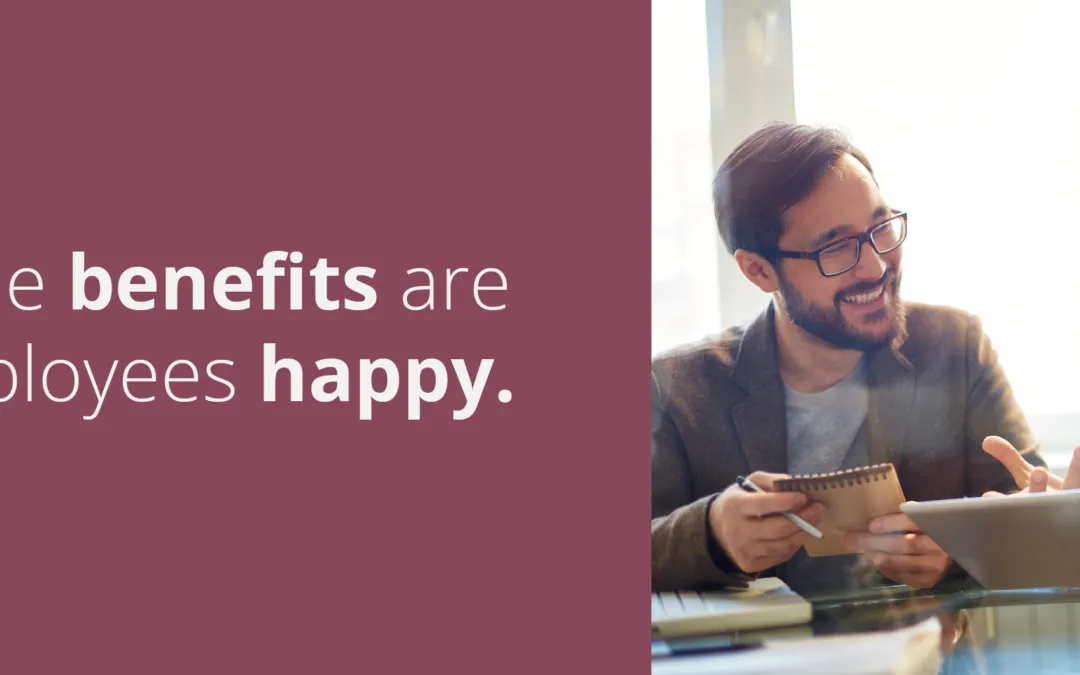Student loan benefits aren’t the only incentives companies are using to recruit and retain new talent. Here are some other programs people are excited about:
 |
Student Loan ReimbursementWhat it is: Financial assistance to help pay back student loans. How it works: Employers provide a matching contribution towards employees’ student loans. Why it’s popular: Baby boomers have been replaced by Millennials, who have an enormous amount of student debt. 70 percent of college graduates are beginning their careers $30,000 in debt. Companies offering student loan repayment benefits can easily recruit and retain college-educated talent. |
 |
Vacation Savings FundsWhat it is: A vacation savings plan How it works: Employees send post-tax dollars directly from their payroll into a “401(play)” or vacation savings account. Why it’s popular: It fits nicely into both a financial and health wellness program. Employees get help saving for big ticket items and vacations prevent them from burning out. Many Americans are unable to use their vacation time: In 2015, 658 million vacation days went unused. A set savings plan may help employees make better use of their time off. Some progressive companies are granting their employees more flexibility with personal time by eliminating set work hours or offering unlimited vacations. Other companies with international offices allow employees to spend time abroad at their overseas offices. |
 |
Maternity Concierge ProgramWhat it is: New and expecting moms can delegate baby-related tasks to a concierge. How it works: Concierges begin to provide assistance to mothers during pregnancy and even after the baby is born. Why it’s popular: Concierge programs allow workers to stay focused. New mothers can better transition to and from maternity leave without feeling like they’re neglecting their job or their family. Other baby-friendly benefits growing in popularity are longer maternity leaves, paternity leave, “nursing rooms,” fertility services such as IVF egg harvesting, and on-site daycare. |
 |
Pet InsuranceWhat it is: Insurance plans for your dog or cat. How it works: Similar to health insurance, you pay a monthly premium for plans with varying deductibles, co-pays, coverage, and treatments to cover your scheduled and unexpected veterinarian costs. Why it’s popular: Pets are a part of the family and people are committed to their care. It also helps younger workers feel appreciated as they’re more likely to have pets than children. Other pet-related benefits are growing in popularity too, such as pet-friendly offices, bring your dog to work days, discounts on doggy daycare, on-site dog parks, and bereavement time for employees who lose pets. |
 |
Charitable Contribution MatchingWhat it is: Employers and employees make charitable contributions to non-profit organizations. How it works: Employees can deposit pre-tax dollars straight from their payroll into a Donor-advised fund (DAF) account and later take a tax credit. Employers have the option to provide matching contributions. Why it’s popular: Millennials are a socially conscious generation. Not only does it make the world a better place, but it boosts staff morale. Many companies are embracing the charitable mentality of today’s workers and giving employees paid time off to volunteer or provide pro-bono services. |
Source: AP: “Companies Offer Quirky Perks Like Guitar Lessons, Tattoos”
Source: Fortune: “Here are the 12 Most Pet-Friendly Companies”
Source: Entrepreneur: “Why ‘Vacation-Shaming’ Hurts You More Than Your Employees”
Source: NBC News: “Maternity Concierges Let You Focus on Your Job While They Prepare for Baby”
Source: Benefit News: “Voluntary benefits“

